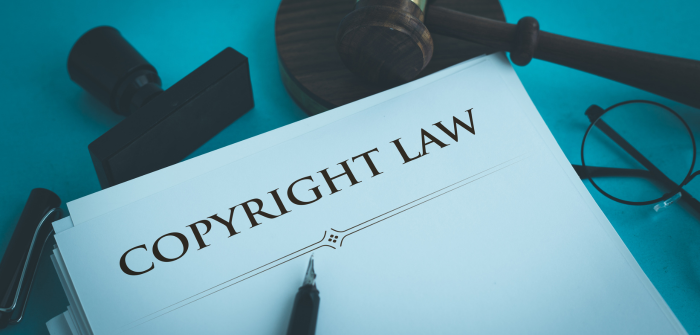
Performers are always the heart and soul of the entertainment industry, having a life filled with music, theatre, dance, and other artistic expressions. But behind every performance, there lies a complex legal protection including the performer’s right. Performer’s right is a distinct branch of intellectual property. It is a facet of copyright law. In the earlier days, the rights of performer’s were not given protection under copyright law. But now under the copyright law, the performers they can enjoy a distinct set of rights that safeguard their creative contributions and ensure fair compensation for their artistry.
Understanding Performer’s Rights:
So, performers’ right is also known as neighbouring rights. They specifically deal with protecting the rights of performers in various aspects, which will be discussed further in the article.
It's basically a spectrum of artistic performances, including live performances, recordings, broadcasts, and even digital performances. It recognizes certain rights of creators and performers. Through this protection under the copyright act a performer can claim ownership over their original works so that a third party cannot use them without proper authorization or consent.
Background of Performer’s Right:
As mentioned earlier this right of the performer was not recognized before. The origin of performer’s rights could be traced back to some international Conventions. The most important among them is the Rome Convention of 1961 which is known as the International Convention responsible for the protection of performers, producers of phonograms, and broadcasting organizations. The International Labor Organization, United Nations Educational, Scientific and Cultural Organization, and World Intellectual Property Organization established this convention. Later in India in the year 1994 in the aftermath of the case of Fortune Films v/s. Dev Anand in 1979 decided by the Bombay High Court, the performer’s rights were recognized by way of introducing Sections 38,39 and 39A in the Copyright Act.
Performer’s Right Under Copyright Act
Under the Copyright Act 1999, the section 2(qq) clearly defines who a performer is, a performer is defined to include an actor, singer, musician, dancer, acrobat, juggler, conjurer, snake charmer, a person delivering a lecture, or any other person making a visual or acoustic live presentation.
However, certain types of activities are excluded from protection as performances. For example, reading, reciting, or delivering news and information, playing or performing a sport, and audience participation in a performance are activities excluded from protection under the Copyright Act.
The copyright act gives the performers a certain set of rights in relation to this which includes both economic and moral rights. The Copyright Act gives performers certain rights in relation to the communication (for example, broadcasting) of their live performances to the public and recordings made from their performances. Performers’ rights in relation to their performances expire 50 years from the end of the calendar year in which the performance takes place. The major rights are:
Once a performer delivers a live performance, the performer may permit a third party to broadcast the live performance. If a third party broadcasts the live performance without prior permission from the performer, it may amount to copyright infringement. However, there is an exception to this. If the live performance is used in a cinematograph film, the rights pertaining to the performance will vest on the producer of the cinematograph film. However, the producer is not allowed to procure commercial gains by using the live performance. If a producer or a third party uses the live performance for commercial gains, the performer is well within their rights to claim royalties for the same.
The rights pertaining to reproducing a sound or a visual recording in the form of copies, commercially renting the copies, or uploading the sound or visual recording on a public platform vest on the performer. Thus, a performer can also be considered the producer of the sound or visual recording. However, the performer has to obtain the consent of all the parties involved in creating the sound or visual recording. This may include lyricists, composers, or actors.
A performer may create a sound or a visual recording and subsequently permit a third party to record the performance. However, the third party is disallowed from using the visual or sound recording for any other purpose. A third party is particularly disallowed from using the recording for any monetary gains as well. However, prior consent must be obtained from the performer if the performance is integrated into a cinematograph film. In this case, the rights pertaining to the performance will vest with the producer of the cinematograph film.
A performer is well within their rights to communicate their work through various mediums to the general public. This may include wireless mediums such as social media or OTT platforms and mediums that use wires to broadcast performances.
Performer’s Moral Rights
Apart from this a performer have certain moral rights as per Section 38 B of the Copyright Act in connection to their performances that are given in public, the live communication of their performances, and by means of a recording of the performance any playing or communication to the public, of their performance. These rights include
One of the biggest examples of this in the international context is Taylor Swift, who is a well-known American singer-songwriter and performer who has been actively involved in advocating for artist's rights, particularly in the context of the music industry. She has faced many challenges regarding the ownership of her master recordings. In 2019, she spoke out against the acquisition of her back catalog (all the works previously produced by her) by talent manager Scooter Braun’s company, which she felt limited her control over her own work. As a response to the master recording issue, Taylor announced her intention to re-record her early albums to regain control over her work and she re-recorded her first six albums as Taylor’s Version, while also negotiating for the rights to the masters of her work when she transitioned to a new label. This move reflects a strategy some artists use to exercise their rights and control over their music.
Role of IPRS
The Indian Performing Right Society (IPRS) is an organization that has a very crucial role in the recognition and also the administration of performer’s right in India. The IPRS acts as a bridge between the creators and their works.
IPRS operates by granting licenses to various entities including broadcasters, music streaming services like Spotify, and venues by allowing them to use the works that are recognized and represented by the society. These entities have to pay a certain amount like royalties to the society which then later on will be distributed to the performers. So, obtaining this license is a very important legal requirement. There are different types of licenses like performance licenses for live shows, broadcasting licenses for radio and television, and digital licenses for online platforms. There exists a proper legal procedure for this. This system ensures that the performers get their due recognition and compensation and ensures transparency in the whole system.
Conclusion
In this highly creative world, the protection of performer’s right remains paramount. In India, the Copyright Act and the IPRS play a crucial role in this by protecting and safeguarding the performer’s right. The existence of such a system encourages and promotes more artists and performers to create more and more works so that they will have a feeling that their works are properly recognized and protected.
© 2026 Business Consultant & Law Firm - Legacy Partners. All Rights Reserved.
Designed by Nuewelle Digital Solutions LLP

Legacy Partners
We typically reply in a few minutes